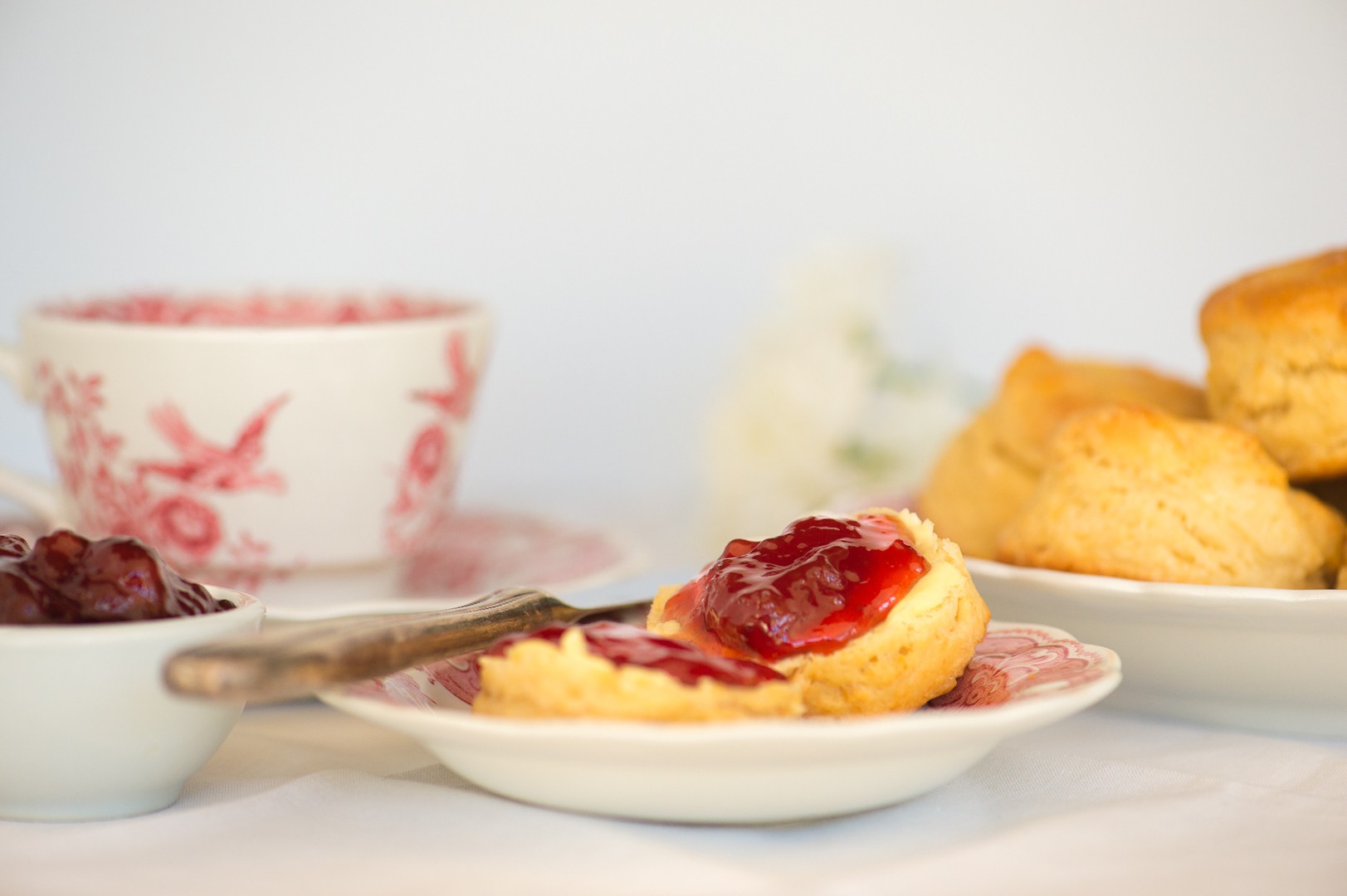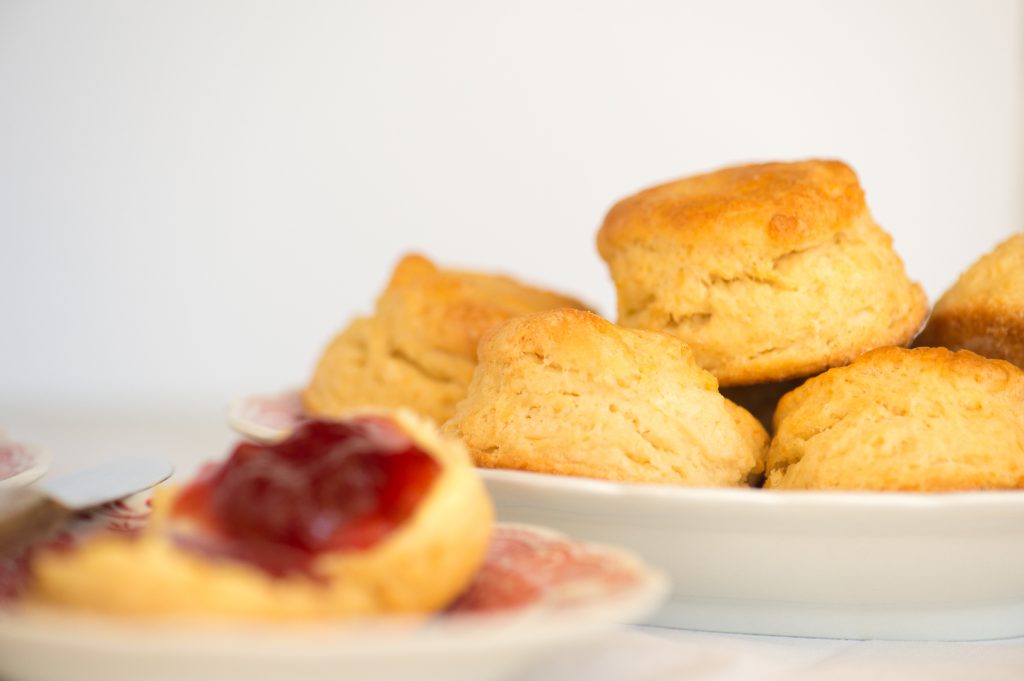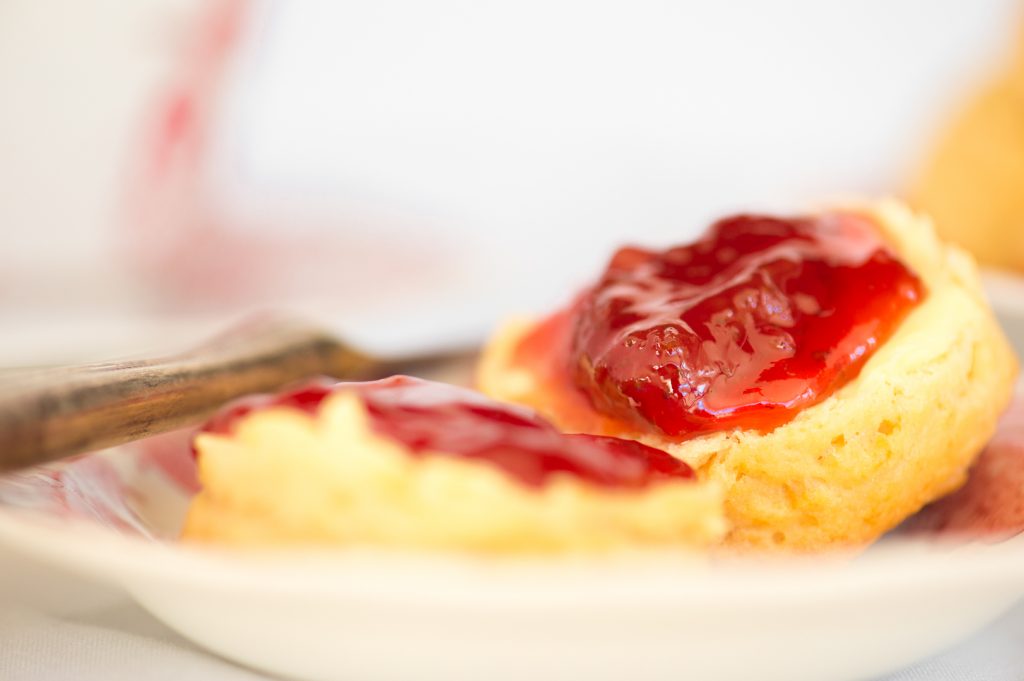
30 May Classic Scones
Something I miss greatly about living in England is the tradition of the “Cream Tea”. Freshly baked scones, with lashings of jam and clotted cream (with a cup of tea on the side of course) – simply delightful! Clotted cream, which we sadly can’t get in SA, is a very thick, rich and spreadable cream. In some parts of England it is spread on the scone first instead of butter. Nevertheless, I feel that one can make up it’s absence by simply using generous quantities of thickly whipped cream or double cream instead.
Classic scones should have a golden crust and a light, fluffy texture. It’s really important to incorporate a lot of air into the mixture and use loads of baking powder! Also, try not to handle the mixture too much when you roll it out, and don’t over-flour it. The more sticky it is the lighter the resulting scones will be.
This is a quick and easy recipe so it’s great for last-minute visitors! The scones are best eaten the day they are made, otherwise warm them up in a hot oven for a few minutes.

Ingredients:
280g plain flour (2 cups)
15ml baking powder (1 tbsp)
45ml castor sugar (3 tbsp)
60g salted butter (¼ cup)
1,25ml salt (¼ tsp)
180ml buttermilk (¾ cup), or 180ml milk mixed with 10ml lemon juice
2,5ml vanilla essence (½ tsp)
milk, for brushing
Directions:
- Sift flour, baking powder and castor sugar together in a large bowl.
- Rub in the butter with your fingertips until the mixture resembles breadcrumbs, or use a pastry cutter.
- Lightly beat together the buttermilk and vanilla.
- Pour this mixture into the flour mixture, and cut in with a round-bladed knife until it comes together nicely.
- On a floured surface, gently pat the dough into a 2cm thick rectangle. It will still be quite sticky but try not to over-flour it. Cut out 5cm diameter rounds with a floured cutter.
- Place onto a greased baking tray and brush lightly with milk. This will give a lovely golden colour to the scones.
- Allow the scones to stand for 15 minutes before baking. This lets the baking powder start to work and improves the volume of the scones.
- Bake at 220°C for 10-12 minutes, then allow to cool on a wire rack.
- Delicious when served with a smear of butter, spoonful of jam and generous dollop of whipped cream!



Elke
Posted at 14:18h, 09 FebruaryFor a savoury change, omit the sugar and add 1 1/2 cups (4 oz) of grated cheese to the mix. Then brush the tops of the scones with milk and sprinkle with another 3/4 cup of cheese. A perfect accompaniment to soups and chowders.
Astrid
Posted at 11:43h, 16 MarchSounds delicious Elke!
Nassim Cassim Kamdar
Posted at 11:47h, 09 Juneplease advise on the quantities mentioned. sugar, baking powder and salt is listed as ml, should this be mg as ml refers to liquids. Thanks. I would really like to try this recipe.
Astrid
Posted at 13:49h, 09 NovemberHi there
No it is in ml, as the quantities are small it is easier to measure them with measuring spoons.
Kaylene Van Schoor
Posted at 15:22h, 07 JuneAbsolutely delicious 😋
Astrid
Posted at 08:30h, 26 JuneThank you Kaylene!
Maggie
Posted at 14:34h, 28 AprilJust tried your recipe and it was perfect. And the tip of leaving the dough for 15 mins really made a difference.
Astrid
Posted at 16:54h, 21 MayThanks for the feedback Maggie!